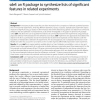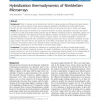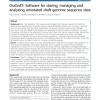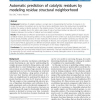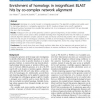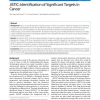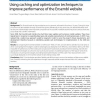BMCBI
2010
13 years 11 months ago
2010
Background: In microarray studies researchers are often interested in the comparison of relevant quantities between two or more similar experiments, involving different treatments...
BMCBI
2010
13 years 11 months ago
2010
Background: While microarrays are the predominant method for gene expression profiling, probe signal variation is still an area of active research. Probe signal is sequence depend...
BMCBI
2010
13 years 11 months ago
2010
Background: Computational identification of blood-secretory proteins, especially proteins with differentially expressed genes in diseased tissues, can provide highly useful inform...
BMCBI
2010
13 years 11 months ago
2010
Background: New "next generation" DNA sequencing technologies offer individual researchers the ability to rapidly generate large amounts of genome sequence data at drama...
BMCBI
2010
13 years 11 months ago
2010
Background: Prediction of catalytic residues is a major step in characterizing the function of enzymes. In its simpler formulation, the problem can be cast into a binary classific...
BMCBI
2010
13 years 11 months ago
2010
Background: Homology is a crucial concept in comparative genomics. The algorithm probably most widely used for homology detection in comparative genomics, is BLAST. Usually a stri...
BMCBI
2010
13 years 11 months ago
2010
Background: Cancer is caused through a multistep process, in which a succession of genetic changes, each conferring a competitive advantage for growth and proliferation, leads to ...
BMCBI
2010
13 years 11 months ago
2010
Background: The Ensembl web site has provided access to genomic information for almost 10 years. During this time the amount of data available through Ensembl has grown dramatical...
BMCBI
2010
13 years 11 months ago
2010
Background: Maximizing the utility of DNA microarray data requires optimization of data acquisition through selection of an appropriate scanner setting. To increase the amount of ...
